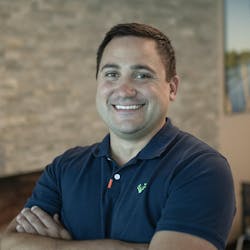Modeling is key to the success of a distributed energy system. Why? Consider the following:
- According to the US Energy Information Administration, there are nearly 3,000 utility companies in the United States, each with different tariff structures.
- Anyone who has done a solar simulation knows that even a small change in location can have a significant impact on energy output.
- There are 8,760 15-minute intervals in just one year.
- Daily, we see new technology entrants into the distributed energy market.
Outside of the modeling for standard system performance and functionality goals, there are several inputs to consider when modeling an energy system:
- Understand the sustainability, resiliency and financial objectives of the system — and the trade-offs among the three. This is the least mathematically rigorous portion of the process and can be challenging to quantify among different stakeholders. For example, a system targeting a 25% CO2 offset with maximum financial benefit and one targeting a 75% offset might not be just different sizes; they may be completely different technologies. Getting this step right is critical.
- For grid-connected systems, understanding the coupled utility can be one of the most complex portions of the process. What rate structure is the site on today? What changes will the utility likely make in the future? Will distributed energy or microgrid additions change the rate structure? What limitations will the utility put on the functionality of the system? What buyback rates can be achieved, and what additional limitations does that pose? Identical systems separated by just a jurisdiction line can come back with very different model results because of the difference in the utility tariff structures.
- What site limitations are there to the types of distributed energy that can be deployed? This includes things like land and/or rooftop availability for solar, community acceptance of wind, or whether continued operation of fossil fuel generators is allowed.
Once these inputs are considered, the modeling process can begin in earnest. The goal of energy modeling is to determine the exact system type and sizing that optimizes within the above considerations. Energy modeling tools, such as EnTech Solutions’ Energy DNATM, take the guesswork out of your energy project. Done diligently, the three important outputs you receive should be:
- The long-term vision for the complete system. This includes sizing of all distributed energy resources (DERs) that best optimize the objectives of the system, the technologies that will be used and how they will support the functionality of the system.
- The phased approach that will be taken to reach the end goal. It should consist of a road map for how your energy system can get from where it is today to the long-term vision, with the potential to implement assets in phases to meet the energy goals that were originally defined.
- Detailed financial and performance metrics of each DER and the overall system. This should be 15-minute interval-level data, not just aggregated annual performance. This modeling should also be available for each step in the phased process detailed above, and it ensures the owner will have a concrete baseline against which to measure future system performance. It also provides a point of reference as the site load changes. One of the main advantages of distributed energy and microgrids is the flexibility to adapt to change. A detailed energy model is an important aspect of being able to deliver on that.
Taking the time to gather these inputs and deliver these outputs will ensure that your energy project starts off on very solid footing.
Jacob Feutz is program manager, distributed energy solutions at EnTech Solutions.

